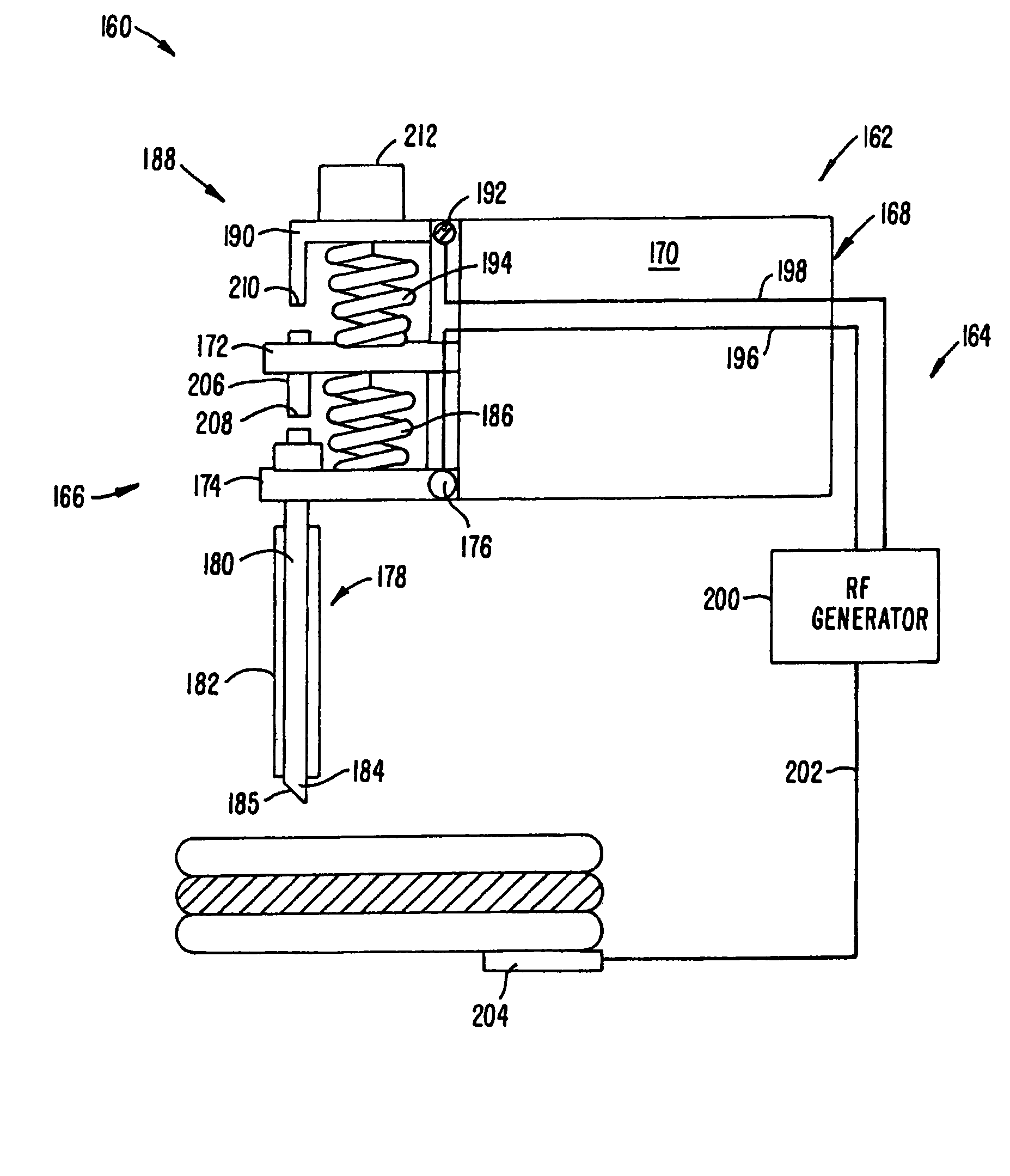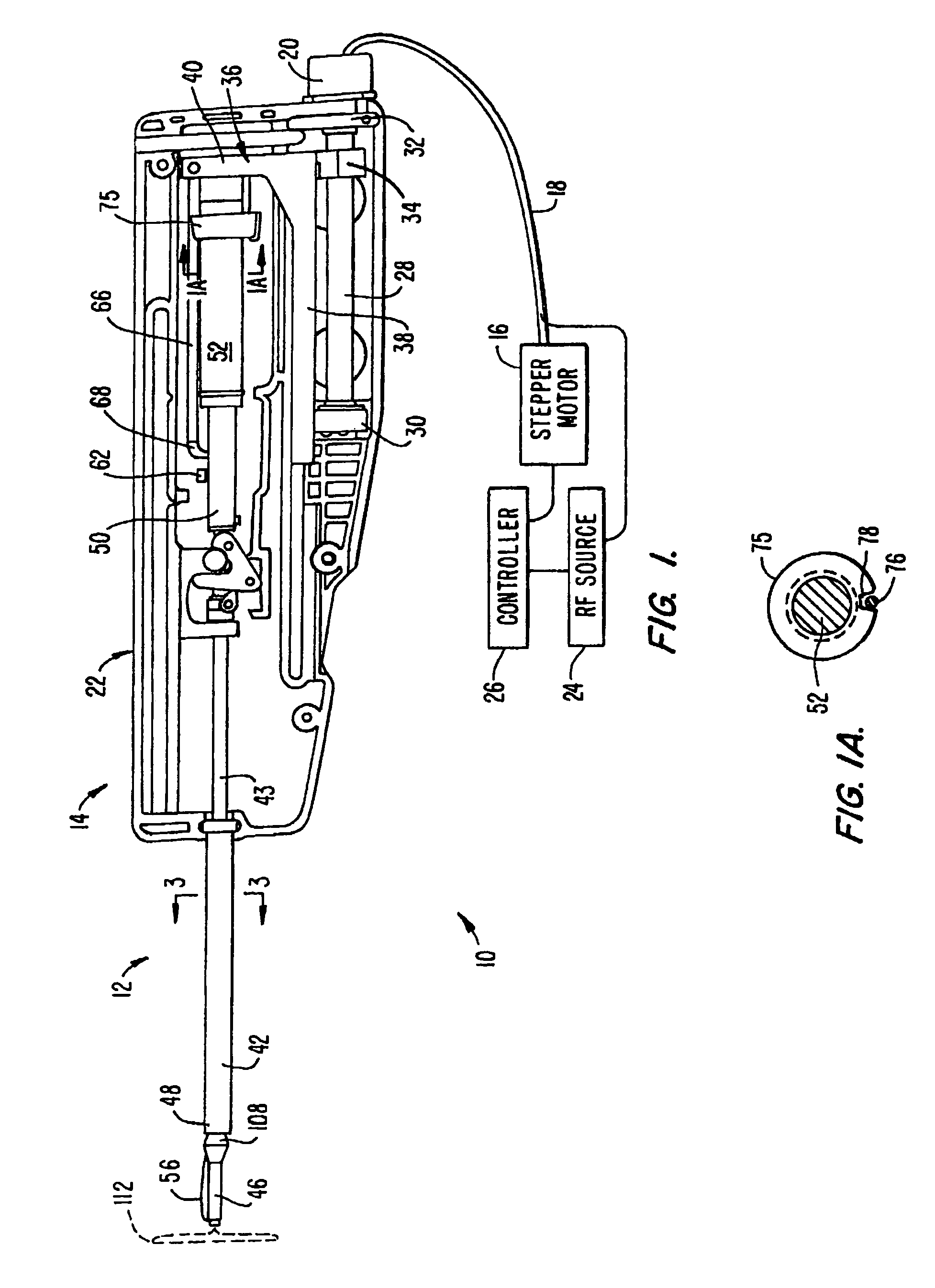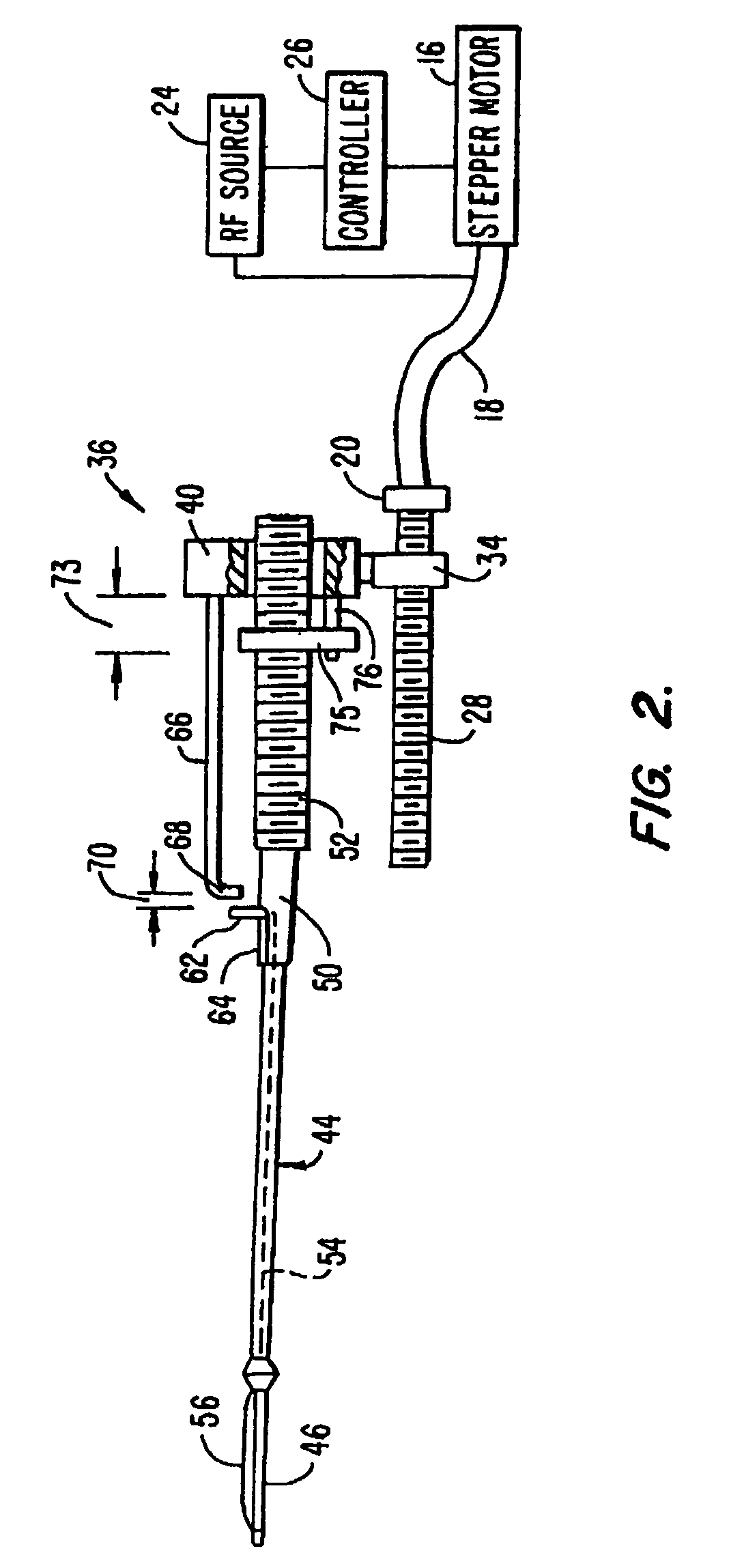Tissue separating and localizing catheter assembly
a catheter and tissue technology, applied in the field of tissue separation and localization of catheters, can solve the problems of not being able to achieve the effect of removing cancerous tissue in less invasive ways, not yet being perfected, and not being able to achieve sufficient improvemen
- Summary
- Abstract
- Description
- Claims
- Application Information
AI Technical Summary
Benefits of technology
Problems solved by technology
Method used
Image
Examples
Embodiment Construction
[0055]FIGS. 1 and 2 illustrate a tissue separator assembly 10 used to separate target tissue from surrounding tissue, typically within a patient's breast. The removal of target tissue may be for diagnostic or therapeutic purposes. The assembly 10 includes a catheter assembly 12 extending from a handle 14. Introduction of catheter assembly 12 into the patient, typically through the skin, is preferably aided by the use of, for example, a trocar or an RF tip to provide a suitable path through the tissue. A stepper motor 16 is connected to handle 14 by a drive cable 18 and a drive cable connector 20 mounted to the handle housing 22. Note that in the Figs. only one-half of handle housing 22 is shown; the other housing half is substantially similar. RF energy is supplied to catheter assembly 12 from an RF source 24, along drive cable 18 and to the interior of handle 14. A controller 26 controls the operation of stepper motor 16 as well as RF source 24, such as speed of operation and energ...
PUM
 Login to View More
Login to View More Abstract
Description
Claims
Application Information
 Login to View More
Login to View More - R&D
- Intellectual Property
- Life Sciences
- Materials
- Tech Scout
- Unparalleled Data Quality
- Higher Quality Content
- 60% Fewer Hallucinations
Browse by: Latest US Patents, China's latest patents, Technical Efficacy Thesaurus, Application Domain, Technology Topic, Popular Technical Reports.
© 2025 PatSnap. All rights reserved.Legal|Privacy policy|Modern Slavery Act Transparency Statement|Sitemap|About US| Contact US: help@patsnap.com



